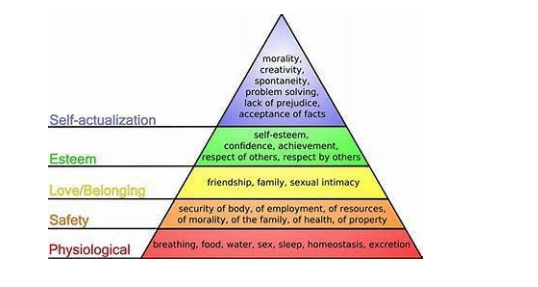It’s time workplaces released the innovation potential their own staff are holding back on.
It started with a comment made in a meeting. The COO of your company, We Can’t Innovate Ltd, told you, “We need to be more innovative as a company to secure our future.”
You dutifully left and asked your team to embrace innovation. You tried to inspire them to get their ideas into your employee suggestion scheme. You even highlighted that you would rather they tried, failed and learned for next time rather not try at all, and you meant it.
A few months later, the nomination for idea of the month comes into your inbox: “By reducing the amount of sauce served in the canteen, We Can’t Innovate Ltd. will be able to save $1 per year and help our national obesity crisis.”
Sadly, the idea is only marginally better than ridiculous. But, to encourage a culture of innovation, you congratulate the employee with the prized gift token that is rolled out for every company scheme. The employee reluctantly accepts the award, knowing their idea was nothing more than a last-minute thought to get the boss off their back.
Does this sound familiar?
When you’ve got a pool of highly-talented employees working for your organisation, this shouldn’t be happening. For those of you with a link to recruitment, you certainly didn’t think you were putting forward candidates who would promote their ability to address the workplace sauce proportions and call it innovation.
Fixing the innovation issue
According to Maslow’s hierarchy of needs theory, people are motivated to achieve certain needs, and some needs take precedence over others. Our most basic need is physical survival. Once that’s fulfilled, the next level is what motivates us.

From Maslow’s diagram, it’s possible to see that to fuel creativity or innovation, a leader must have enabled their people to reach the stage of self-actualisation.
I can hear you say, “I know that already. That’s why we sponsored our juniors Cedrick and Ethel through their training last year”. Just wait, like most organisations you have probably missed something.
Innovating yourself out of a job
Let’s play a scenario through.
Fred is one of six staff working in payroll. He teaches himself to code in this spare time. Because of this he has noticed that if the company payroll software is amended, workload in the department could be reduced by 50 per cent. He has mentioned this to his colleagues and initially had some interest. Then a seasoned team member pulled him aside and said, “Fred, if you reduce our workload by 50 per cent half of us will be out of a job.”
“No we won’t,” says Fred. “Last month the CEO stood up and said if we innovate, our capacity could be freed up to better the organisation in other areas.”
Let’s pause the scenario here. Consider your organisation and Fred’s choices. If an initiative could be brought in to reduce six peoples’ workloads down to three, would your management team see it as a chance to make some quick savings? Would they embrace the challenge of looking wider across the organisation to create a culture where this type of innovation is sought after?
Would they work side by side with HR and other managers, investigating positions that would keep the staff member challenged and engaged? And, perhaps most importantly, would the management team allow staff to hold onto their hard won benefits like flexible hours, autonomy in their role, financial bonuses tied to performance – benefits that aren’t always a given, but earned over an employee’s tenure?
Or would they place the call into HR and say, ”We have a three people surplus. Should we redeploy them or make them redundant?”
If you answered the latter, then by proposing his idea to senior management Fred has stabbed two members, and himself, in the back. His reward for reducing workload or increasing efficiency by 50 per cent is to not have a job. He can’t feed his family or make his mortgage repayments, removing the core foundations of Maslow’s pyramid. Even if he is retained, what benefits is he risking by transitioning into a new role? Will his bonus be less this year as he adapts to a new role?
Alternatively, Fred could suggest reducing the amount of sauce served in the canteen, keep his job and splash out the usual bonus on a family a tour of Europe. Tough choice, right?
If your staff feel their job security is on the line, or that they risk losing one of their hard-earned benefits, they simply won’t innovate.
What’s the solution?
If we don’t offer any form of protection both to job security (which is well understood) and every prized benefit the employee has attained to manage their work/life balance, how can expect them to shine? Nobody does well in a system that might punish them. As HRM has previously written, there’s a right and a wrong way to automate staff out of a job.
There are often all sorts of systems in place across every business, except an innovation system. We generally have ideas or employee suggestion systems, but we don’t often assess the “so what” element of the system for our employees. And that’s where we hit an innovation wall, because as William Deming once said: “A bad system will beat a good person every time”.
Being more specific to the current topic, a bad system will beat innovation every time. Innovation can’t work if your people policies don’t protect and support those who are innovating.
Stuart Gerrard is an innovation and business improvement consultant.
When systems and structures change in a workplace, it’s important for leaders to know how to react. AHRI’s short training course Change Management will equip you with the tools and techniques to manage the people side of changing systems.

